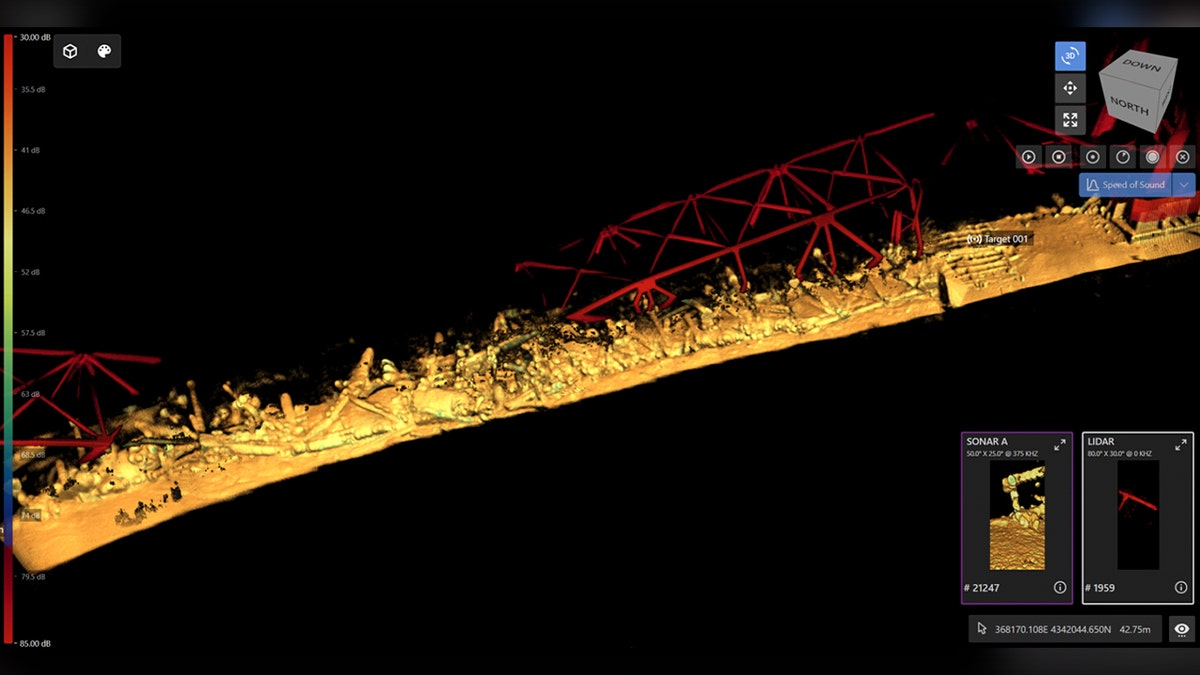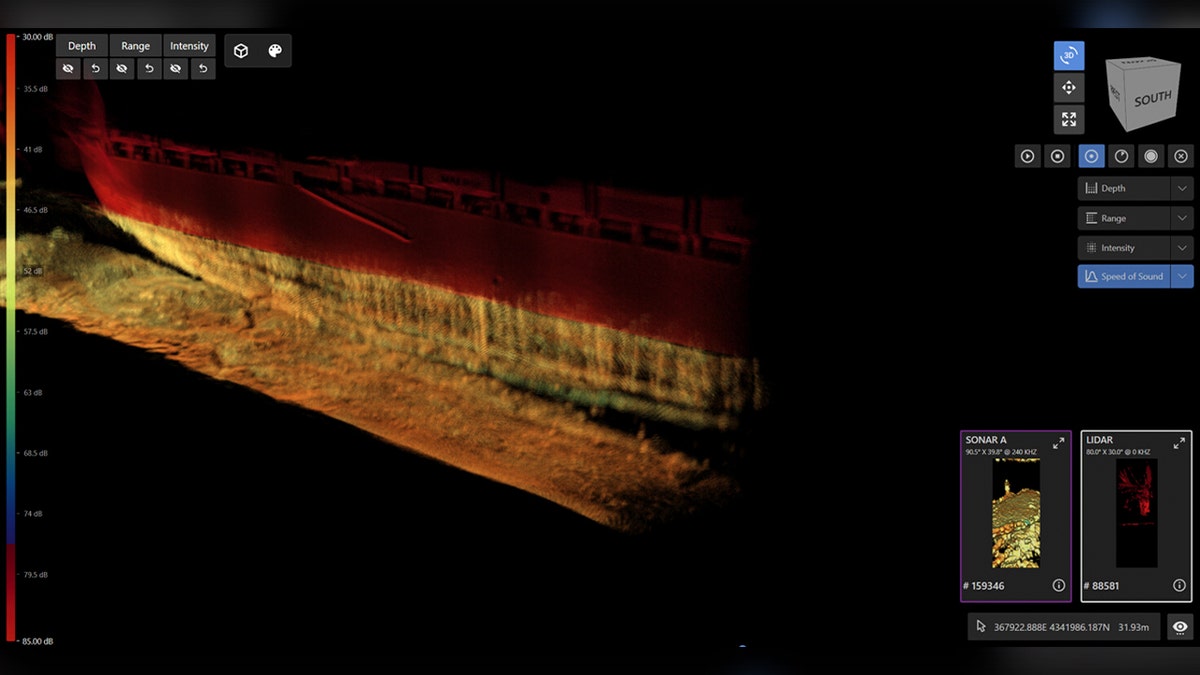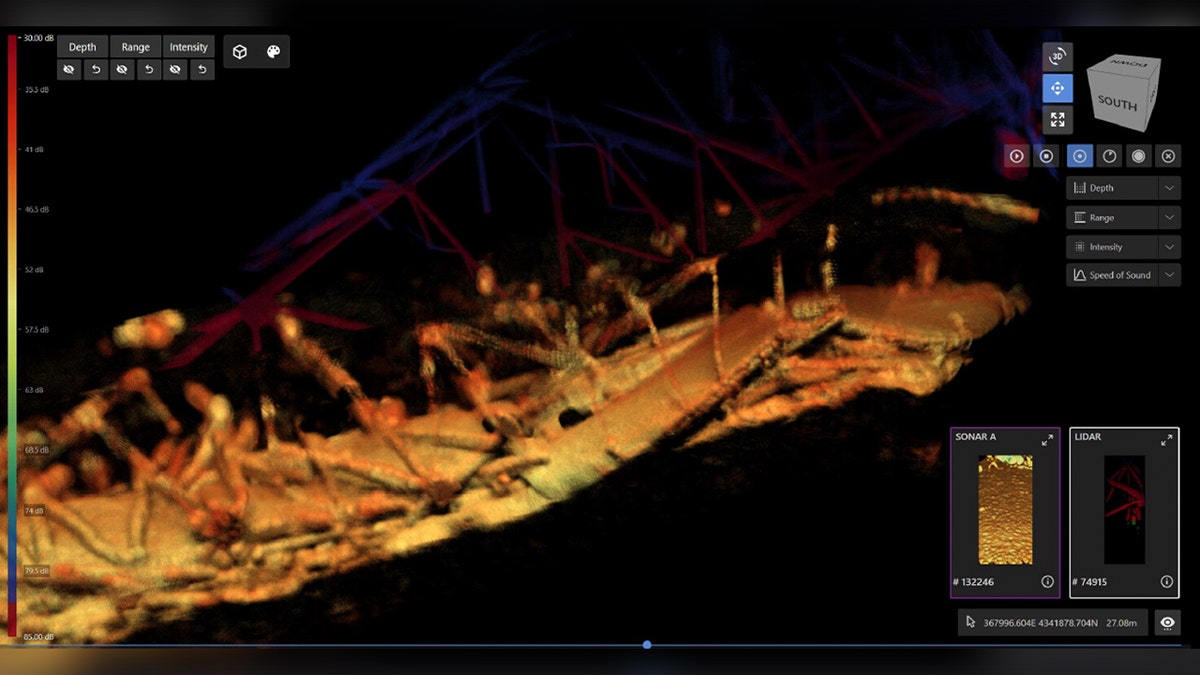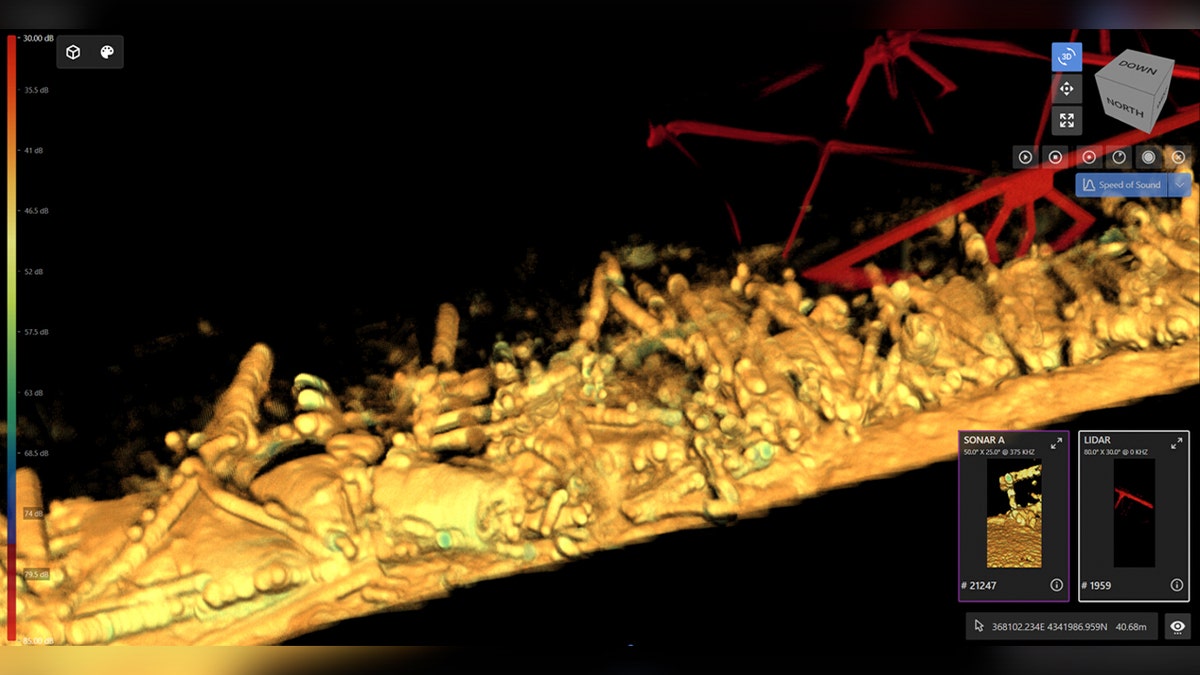Dive teams assessing how to get wreckage out after Baltimore bridge collapse
Fox News correspondent Madeleine Rivera reports from Baltimore on the efforts to clear the wreckage from the collapse of the Francis Scott Key Bridge on 'Fox Report.'
Photos released by the U.S. Navy show the wreckage of the Francis Scott Key Bridge resting at the bottom of the Patapsco River in Baltimore, Maryland.
The U.S. Army Corps of Engineers posted the 3D images online Tuesday. They were supplied by the Navy's Naval Sea Systems Command (NAVSEA) Supervisor of Salvage and Diving (SUPSALV) and were taken by divers with an underwater sonar imaging tool, called the CODA Octopus.
"These 3D images show the sheer magnitude of the very difficult and challenging salvage operation ahead," the Army Corps of Engineers said.
Murky water and mud at the bottom of the river limited divers' visibility to just one to two feet, the officials in charge of salvage operations said.
BALTIMORE BRIDGE COLLAPSE: SECOND TEMPORARY CHANNEL OPENED, ROUGH WEATHER SLOWS DEBRIS REMOVAL

3D imagery shows the wreckage of the Francis Scott Key Bridge resting at the bottom of the Patapsco River. (U.S. Navy’s Naval Sea Systems Command (NAVSEA) Supervisor of Salvage and Diving (SUPSALV))
"Divers are forced to work in virtual darkness, because when lit, their view is similar to driving through a heavy snowfall at night with high-beam headlights on," the Army Corps of Engineers explained. "So murky is the water, divers must be guided via detailed verbal directions from operators in vessels topside who are viewing real-time CODA imagery."
There is no usable underwater video footage of the wreckage because, as one diver reportedly stated, "there's no need to take video of something you can't even see."
MARYLAND GOVERNOR SAYS CONDITIONS ARE ‘UNSAFE’ FOR RESCUE DIVERS AFTER BRIDGE COLLAPSE

Divers reported that thick mud and murky water have made visibility so low it is all but impossible to capture video of the wreckage. (U.S. Navy’s Naval Sea Systems Command (NAVSEA) Supervisor of Salvage and Diving (SUPSALV))
Maryland workers opened a second temporary channel Tuesday at the site where a cargo ship struck the bridge, causing its collapse, officials said.
The new channel is 14 feet in depth. On Monday, two ships, a fuel barge and a scrap barge, passed through another temporary channel on the north side of the bridge that is 11 feet in depth.

These 3D images were taken by divers using CODA Octopus sonar technology. (U.S. Navy’s Naval Sea Systems Command (NAVSEA) Supervisor of Salvage and Diving (SUPSALV))
The center of the bridge is 50 feet deep and large cargo ships carrying vehicles typically require depths of at least 35 feet, Maryland Gov. Wes Moore said during a news briefing.

Two bodies have been recovered from the site of the bridge collapse. Two survivors were pulled from the water on March 26. Four others are presumed dead, and their bodies have not been recovered. (U.S. Navy’s Naval Sea Systems Command (NAVSEA) Supervisor of Salvage and Diving (SUPSALV))
Rough weather has complicated efforts to clear the channel. Crews tried to remove one section of the bridge on Monday, but cranes couldn't operate because of lightning in the area, which slowed down recovery operations.
CLICK HERE TO GET THE FOX NEWS APP
The container ship Dali crashed into the bridge in the early morning of March 26 after the crew lost power and propulsion. The pilots issued a mayday, giving law enforcement enough time to stop traffic from crossing the bridge before the ship struck a support pylon, causing the whole structure to collapse.
A crew of eight construction workers was on the bridge when it fell. Two of the workers survived and were pulled from the water, one with critical injuries. Two bodies were found in a submerged pickup truck. The other four have been presumed dead and divers have been unable to find their bodies so far.
Fox News Digital's Louis Casiano contributed to this report.























